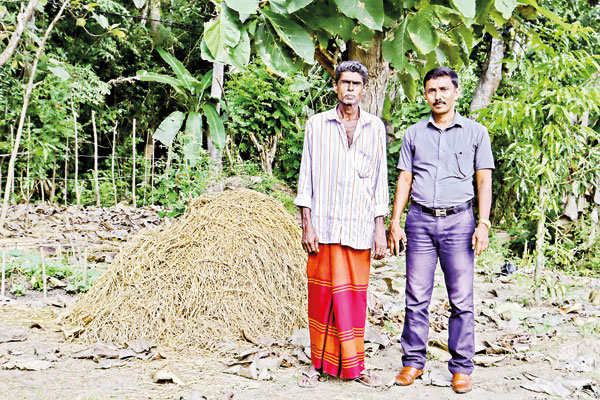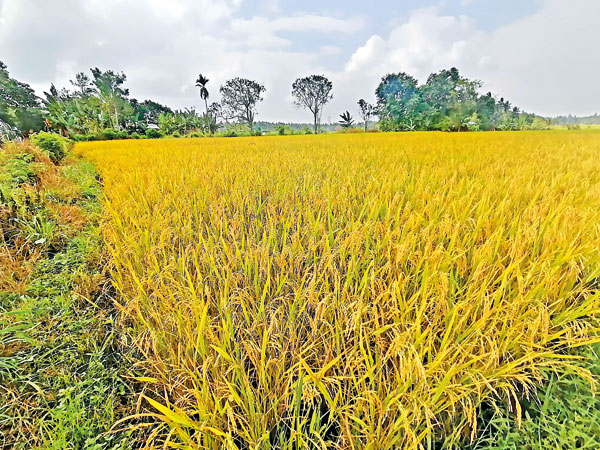Sunday Times 2
Empowering farmers: Chandrasena’s journey with Integrated Plant Nutrient Management
View(s):
Chandrasena (L): Hopefully my son will continue to cultivate paddy in the future
FAO promotes the method in paddy farming for better yields
For four decades, Chandrasena, a seasoned paddy farmer in Ampara, has devoted himself to maximizing yields on the two-acre plot of paddy fields he inherited from his father. Despite facing myriad challenges he recently experienced a bountiful harvest thanks to Integrated Plant Nutrient Management (IPNM), part of the “RiceUP” project implemented by the Department of Agriculture and the Food and Agriculture Organisation of the United Nations (FAO), with funding from the European Union (EU).
“Over the years I have witnessed how farmers face numerous difficulties trying to get better yields. We have faced drought, heavy rain, pests and diseases that destroyed our harvests. But this year has been a blessed year. This year’s harvest has been good. This Maha season we harvested 1800kg paddy per acre which is around 300kg more than the last season,” says Chandrasena.
Besides increased yields, IPNM’s guidance in fertilization and soil management significantly reduced Chandrasena’s urea usage from 100kg to 60kg per acre, saving costs. With the assistance of Agriculture Instructor E M Dhammika Bandara, Chandrasena and 28 fellow farmers in Uhana, Ampara, learned IPNM techniques through Farmer Field Schools, resulting in a remarkable increase in yield despite adverse weather conditions.
“This is one of the best programmes we have come across during my tenure working in the field. The application of the Farmer Field School methodology has been successful. These farmers have cultivated 60 seasons in their life, but they have not come across the IPNM technology,” says Dhammika. “Chandrasena’s plot was the control plot. We managed to see better harvest from his field as he applied the IPNM practices exactly as taught. We could see a clear difference to non-IPNM plots, IPNM plots had a higher yield even with bad weather.”

Bountiful harvest through nutrient management
Chandrasena’s success story highlights the potential of IPNM to enhance yields and economic sustainability for smallholder farmers like himself. While he currently supplements his income with daily wage jobs, Chandrasena remains optimistic about the future of paddy farming, especially with his son’s support and potential continuation of the family tradition.
“My son is employed but supports my farming as much as possible, hopefully he will continue to cultivate paddy in the future.”

